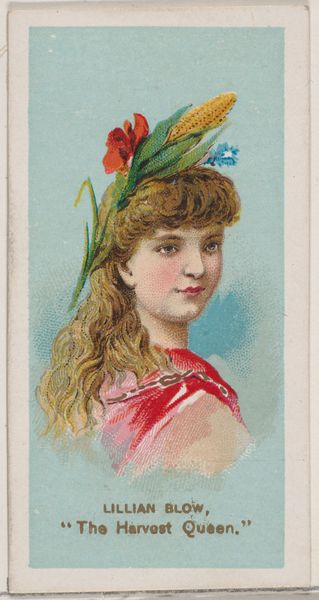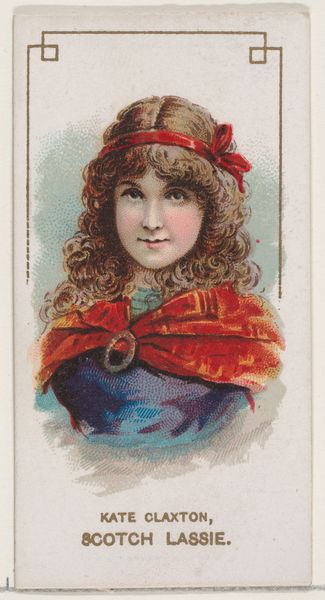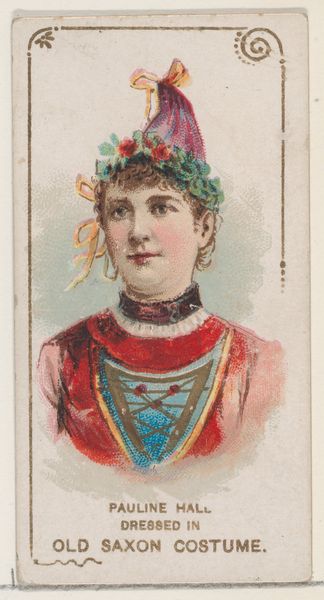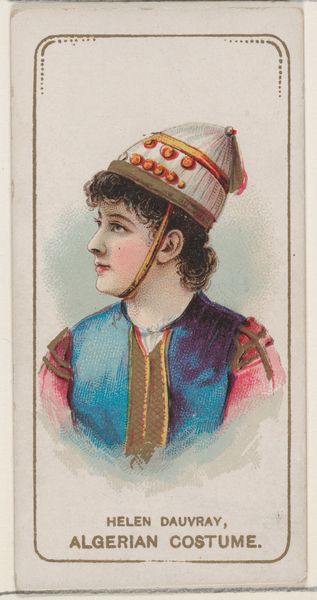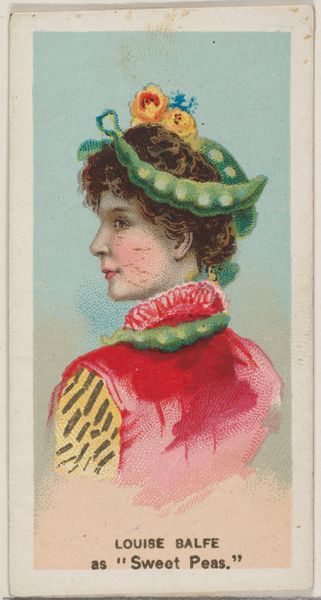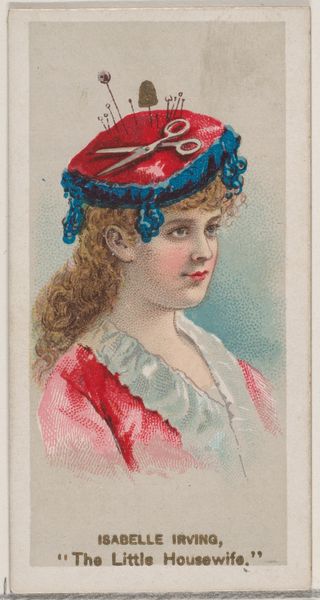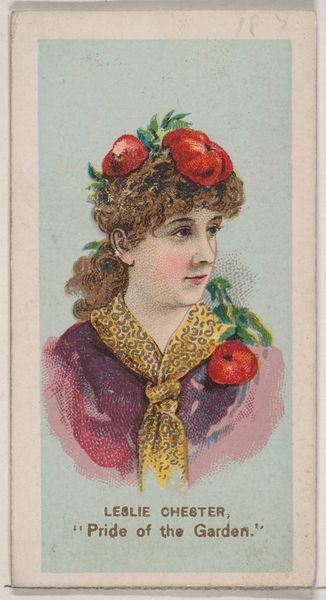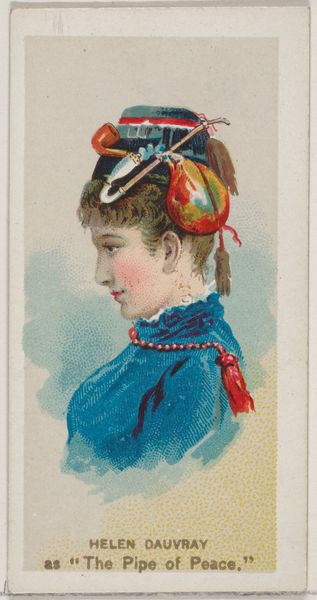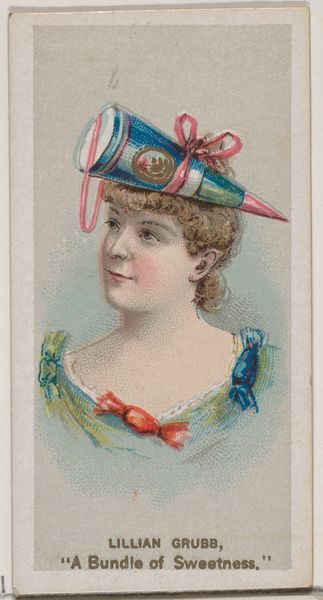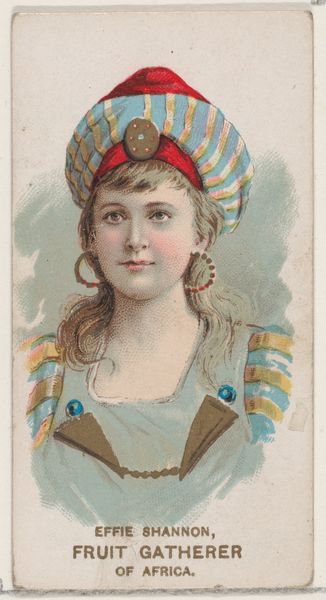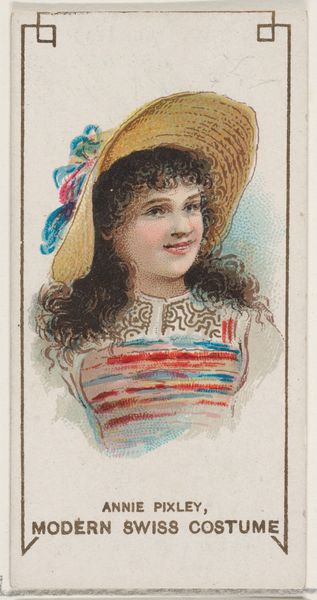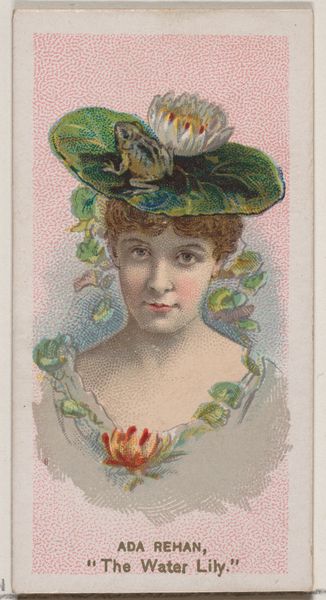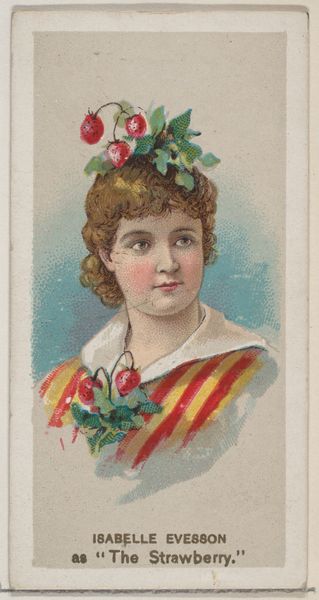
Lillian Grubb Dressed as a German Girl of the 16th Century, from the set Actors and Actresses, First Series (N70) for Duke brand cigarettes 1888 - 1889
0:00
0:00
drawing, coloured-pencil, print, watercolor
#
portrait
#
drawing
#
coloured-pencil
#
water colours
#
pictorialism
# print
#
watercolor
#
coloured pencil
#
genre-painting
#
watercolor
Dimensions: Sheet: 2 3/4 x 1 1/2 in. (7 x 3.8 cm)
Copyright: Public Domain
This small card portraying Lillian Grubb dressed as a 16th-century German girl was made around 1900 by W. Duke, Sons & Co. as a promotional item for their cigarettes. Printed chromolithographically, it’s a far cry from traditional art materials. What makes it interesting is how the means of production were entirely tied to mass consumption. The image's charm resides in the contrast between the high-Renaissance costume and the industrial context of its creation. The card stock itself has a smooth, almost waxy texture, a result of the printing process designed to make colors pop and images reproducible at scale. This was no hand-painted portrait; it was a product, churned out to entice smokers. Think of the laborers who printed these cards, the tobacco farmers, and the consumers lighting up – this little card connects them all. The card’s value isn't just in its aesthetic appeal, but in what it tells us about the era’s social fabric, the rise of consumer culture, and the blurring lines between art, advertising, and everyday life.
Comments
No comments
Be the first to comment and join the conversation on the ultimate creative platform.
